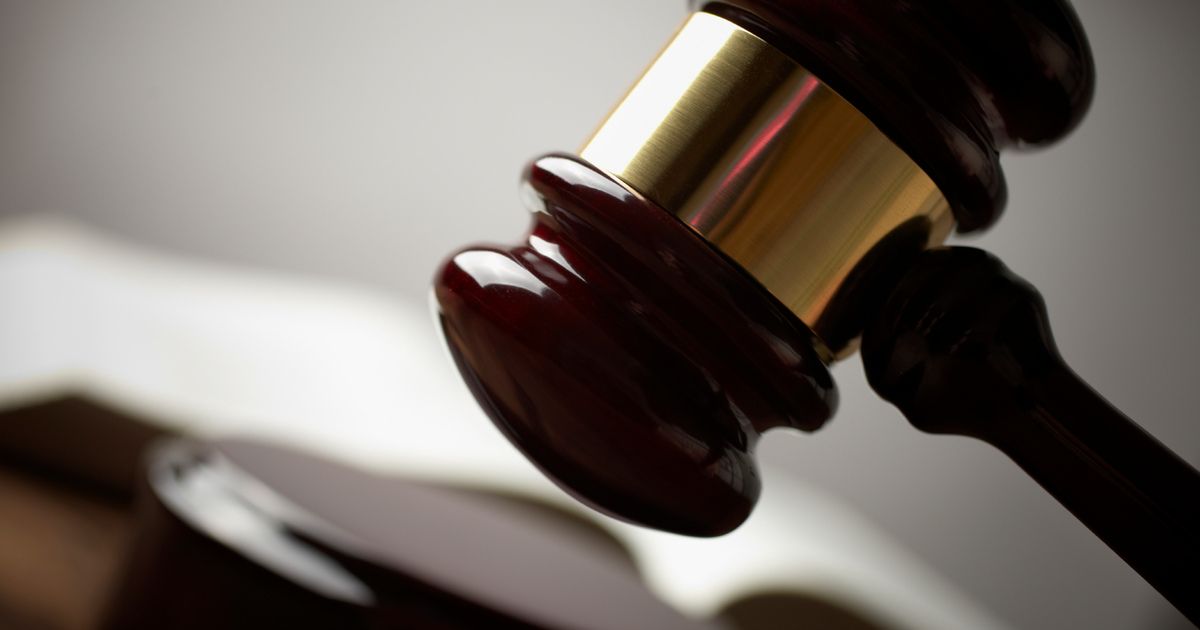Author: Rubby Kalpesh Rajput, Asmita College Of Law
This editorial is based on the news “Intra-group caste variances, equality and the Court’s gaze” which was published in the Hindu. Soon, a judgement by a seven-judge Bench of the Supreme Court of India in ‘State of Punjab vs Davinder Singh Case’ will determine the future of affirmative action and reservations under the Constitution.
INTRODUCTION
Background and Timeline of State of Punjab Vs Davinder Singh Case
Issue: Whether State governments can make sub classifications within the proportion prescribed for Scheduled Castes and Scheduled Tribes in public employment recruitment.
Disparities within SCs and ST’s: Studies show disparities within SCs and STs, suggesting that certain groups face more discrimination than others, prompting the need for State governments to have the power to recognize intra-group variances.
1975, A circular by the Punjab Government: Stipulating that 50% of the total reserved seats for Scheduled Castes (SCs) in the state will be offered to Valmikis and Mazhabi Sikhs, with the remaining half open to other SC groups.
2000, Andhra Pradesh enacts the Scheduled Castes (Rationalisation of Reservations) Act: It divides SCs into four distinct categories and grants each category a separate quota based on their backwardness.
2004, E.V. Chinnaiah vs State of Andhra Pradesh Judgement: A five-judge Bench quashed the Andhra Pradesh Scheduled Castes (Rationalisation of Reservations) Act, 2000, on the ground that it offended Article 341 of the Constitution.
Article 341 of the Constitution: This provision allows the President of India to notify a list of SCs for each State, and stipulates that the list can only be modified by Parliament.
In July 2006, the Punjab and Haryana High Court struck down this notification, following a judgement of the Supreme Court, in 2004 in E.V. Chinnaiah vs State of Andhra Pradesh.
2006: The Punjab and Haryana High Court strikes down Punjab’s 1975 circular following the Supreme Court’s judgement in the Chinnaiah case.
2006, The Punjab Scheduled Castes and Backward Classes (Reservation in Services) Act:
Even though its 1975 circular was struck down, the Government of Punjab enacted a new law, i.e.
The Punjab Scheduled Castes and Backward Classes (Reservation in Services) Act, 2006, which once again provided first preference to Balmikis and Mazhabi Sikhs.
The High Court declared this law too to be unconstitutional.
2020: The Supreme Court, sitting on appeal over the decision regarding Punjab’s 2006 law, expresses doubts about the correctness of its earlier verdict in the Chinnaiah case.
At Present: A seven-judge Bench is created for a fresh hearing on the issues raised in the State of Punjab vs Davinder Singh case.
Need For Fresh Hearing on the Issues Raised in the State of Punjab vs Davinder Singh Case
Promise of Substantive Equality:
Articles 14 to 16 read together as a code, is a promise of substantive equality.
This promise acknowledges historical discrimination based on caste in India.
State Of Kerala & Anr vs N.M. Thomas & Ors (1975):
The Supreme Court, since its 1975 judgement in the N.M. Thomas’ case seems to recognize that governments have the power and duty to make reservations to correct historical injustices and ensure substantive equality.
Reservations:
Reservations have to be seen as a means of furthering the goal of Equality.
Constitutionally Obligated:
Therefore, if the Government of Punjab finds that its current reservation measures haven’t adequately benefited Valmikis and Mazhabi Sikhs, it is constitutionally obligated to correct them.
Article 341 Doesn’t Expressly Forbid Sub-Classification:
If Article 341 is seen as preventing sub-classification, it would contradict the Constitution’s equality principle.
However, Article 341 Doesn’t Expressly Forbid Sub-Classification;
It only prevents states from adding or removing castes from the President’s list of Scheduled Castes (SCs).
So, if states provide special measures for certain castes on this list, it doesn’t affect the entitlement of other castes to general reservation provisions.
On Sub Classification:
The Punjab law does not modify the President’s list.
It merely accounts for inter-se backwardness within that list by providing for a greater degree of preference to Balmikis and Mazhabi Sikhs.
This sub-classification is also in consonance that reasonable classifications are permissible to ensure that equality is achieved.
Conclusion
The Supreme Court must heed its recognition in N.M. Thomas that governments have the power and duty to make reservations while striving for equality. Therefore, any state authority to offer special measures to the most discriminated castes within SCs and STs should be seen as promoting equal opportunity.
FAQS
Why in News?
The Supreme Court of India in review sentence of Punjab and Haryana High Court, delivered a cornerresolution allowing countries the administration tosub-classify reticent order groups, similar as slated gentries( SCs) andslated lines( STs), for the purpose of reservations. This 6- 1 maturity resolution overturns the 2004 holding in E.V. Chinnaiahvs. State of Andhra Pradesh, unnaturally revamping the geography of reservation programs in India.
What was the SC’sresolution on Sub-Classifications of SCs and STs?
Sub-Classifications suffered The Court controlled that countries arenaturally allowed tosub-classify SCs and STs grounded on varying situations of backwardness. The seven- judge Benchcontrolled that countries can nowsub-classify SCs within the 15 reservation share to give better brace for the mostunderprivileged groups. Chief Justice of India emphasised the disparity between”sub-classification” and”subcategorisation,”warning against utilizing these groups for political conciliation preferably than genuine upliftment. TheCourt reflected thatsub-classification should be grounded on existential data and literal substantiation of systemicdemarcation, preferably than arbitrary or political reasons. countries must predicate theirsub-classification on existentialsubstantiation to insure loveliness and forcefulness. The Court purified that 100 reservation for anysub-class is n’tadmissible. State opinions onsub-classification are subject to judicial review to help political abuse. The Supreme Court hascontrolled that the’ delicate subcaste’ principle, preliminarily applied only to Other Backward Classes( OBCs)( as stressed inIndra Sawhney Case), should now also be applied to SCs and STs. This means countries must identify and count thedelicate subcaste within SCs and STs from reservation advantages. The sentence responds to the want for a further refinedpath to reservations, icing that advantages reach those who are truly underprivileged.The court stated that Reservation has to be limited only to the first generation. still, the asset of reservation would notbe logically accessible to the alternate generation, If any generation in the blood has taken advantage of the reservationand achieved a advanced status. explanation for the Verdict The Court conceded that systemic demarcation prevents someingredients of SCs and STs from advancing, and thus,sub-classification under Composition 14 of the Constitution cansupport manipulate these difference. This path allows countries to conform reservation programs to more effectivelysupport the most underprivileged within these groups.
What led to the Reference of the Sub-Classification Issue?
Theconclusion ofsub-classification of slated gentries( SCs) and its referral to a seven- judge judge was founded by a five- judgejudge in the case of country of Punjab v. Davinder Singh, 2020. The primary procurators leading to this reference wereretrospection of EV Chinniah Judgment The five- judge judge set up it necessary to review the sentence in EV Chinniah v.State of Andhra Pradesh, 2004. The EV Chinniah governing stated thatsub-classification within SCs was n’t admissible, asSCs formed a homogeneous group. Punjab Scheduled Caste and Backward Classes( Reservation in Services) Act, 2006 Thespecial legitchallenge in this case involved the validity of Section 4( 5) of the Punjab Scheduled Caste and Backward Classes Act, 2006.This qualification commanded that 50 of vacuities reserved for SCs in direct reclamation be offered to Balmikis andMazhabi Sikhs, contingent on their vacuity. High Court governing A division judge of the Punjab and Haryana High Court,in 2010, struck down this qualification, counting on the EV Chinniah judgment. The High Court controlled that all gentriesin the Presidential Order under Article 341( 1) formed one homogeneous group and could n’t be subdivided farther. TheEV Chinniah sentence had established that Composition 341 of the Constitution, which empowers the President to identifyand notify SCs, was the base for reservations. tallying to Composition 341, SCs can only be linked and categorised by the President in discussion with the Governor and through public announcement.
What are the Assertions For and AgainstSub-Classification?
Assertions ForSub-Classification meliorated InflexibilitySub-classification allows both intermediary andcountry governments to design programs that better address the requirements of the most underprivileged within SC STcommunities. Alignment with Social Justice sympathizers argue thatsub-classification helps achieve the indigenous thing ofgregarious justice by furnishing targeted advantages to those who need them the most. indigenous vittles Composition16( 4) of the Constitution, this qualification permits reservations for backward classes who are deficiently described incountry services. Composition 15( 4) empowers the country to produce special arrangements for promoting the interestsand weal of socially and educationally backward classes of the society similar as SC and STs. Composition 342A supports the inflexibility of countries in maintaining their lists of socially and economically backward classes. Assertions AgainstSub-Classification Unity of SCs and STs criticizers argue thatsub-classification could undermine the livery status of SCs and STsas recognised in the Presidential list. Implicit for Inequality There are enterprises thatsub-classification could conduct tofarther division and potentially complicate inequalities within the SC community.
What’s the Significance of the SupremeCourt resolution?
Overruling former sentence The Supreme Court’s resolution reverses the E.V. Chinnaiah holding, which
had preliminarily held that SCs and STs were a homogeneous group and therefore could n’t be subdivided for reservationpurposes by the countries and unconstitutional under Composition 341 of the Indian Constitution. The Chief Justice ofIndia stated that the new holding onsub-classifying slated gentries and slated lines does n’t offend Articles 14 or 341 of theConstitution. jolt on State ordinances The holding upholds colorful country ordinances that had preliminarily been struckdown, similar as those in Punjab and Tamil Nadu, allowing countries to producesub-categories within SC and ST groups.
The Punjab government’s 1975 announcement, which separated its SC reservation into orders for Valmikis and MazhabiSikhs, was originally upheld but latterly challenged following the E.V. Chinnaiah judgment. Future of Reservations Stateswill now have the administration to applysub-classification programs, which could conduct to further refined and operativereservation strategies.
What are the expostulations forSub-Classification?
Data Collection and substantiation Gatheringaccurate and complete data on the socio- profitable conditions of nonidenticalsub-groups within SCs and STs is essential.



